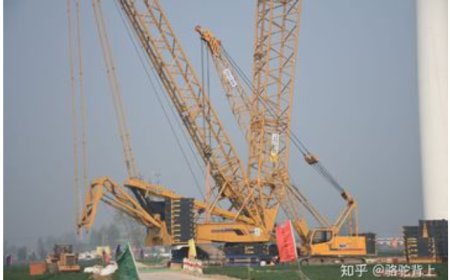Leveraging Autonomy Solutions for Safer and Smarter Fleet Operations
Advance intelligent systems with autonomy solutions for safe, scalable operations across vehicles, drones, and robotics in real-world environments.

Introducton
In todays rapidly evolving technology landscape, the rise of autonomous systems is transforming how industries manage mobility and logistics. Whether its autonomous vehicles (AVs), unmanned aerial vehicles (UAVs), or autonomous mobile robots (AMRs), the implementation of robust autonomy solutions is enabling fleets to operate with greater intelligence, efficiency, and safety.
By combining AI, data annotation, simulation, and remote monitoring, these solutions ensure that autonomous systems can function reliably in dynamic and unpredictable environments. This article explores how autonomy solutions are helping organizations enhance fleet performance, with a focus on real-world applications and proven operational models.
What Do Autonomy Solutions Entail?
Autonomy solutions refer to the development, deployment, and operational support of intelligent systems capable of independent navigation and decision-making. These systems are built around a range of technologies, including:
-
Sensor-based perception
-
Simulation operations
-
Data analytics
-
Remote assistance and human-in-the-loop support
-
Scalable data annotation pipelines
These components work together to help fleets navigate real-world challengessuch as identifying obstacles, predicting behavior, and responding to complex eventswithout direct human control.
Key Areas of Autonomy in Fleet Operations
1. Simulation for Safer Development
Simulation plays a crucial role in training and validating autonomous systems before deployment. Instead of relying solely on on-road testingwhich can be expensive and riskysimulation environments allow engineers to recreate thousands of real-world scenarios in controlled virtual settings.
This approach supports rapid iteration and risk-free stress testing, ensuring that autonomous systems can handle a wide range of edge cases. The emphasis on scalable, synthetic scenario creation aligns with the Future of Autonomous Intelligence with Simulation Operations, which helps organizations accelerate development while maintaining safety and compliance standards.
2. Human-in-the-Loop Remote Assistance
Even the most advanced autonomous systems can encounter situations that require human judgmentsuch as ambiguous road signs, unexpected obstacles, or software anomalies. In such cases, remote assistance allows human operators to monitor and guide fleet units in real time.
Through secure, high-availability operations centers, autonomy service providers offer live interventions, escalation protocols, and decision support. This combination of autonomy and human oversight ensures operational continuity without sacrificing safety.
3. Data Annotation and Perception Training
For any autonomous fleet to operate safely, it must accurately perceive its surroundings. This requires vast amounts of labeled dataimages, videos, and lidar streamsto train and fine-tune perception algorithms.
Data annotation services focus on labeling objects, tracking movement, segmenting road features, and identifying human activities across multimodal datasets. This labeled data is then used to improve machine learning models for object detection, navigation, and environmental understanding.
These capabilities are especially important for AVs and ADAS (Advanced Driver Assistance Systems), where precision and accuracy in data labeling directly affect decision-making in real-world conditions.
4. Support Across Domains: Land, Air, and Robotics
Modern autonomy is no longer confined to the road. Todays solutions span multiple domains, including:
-
Ground-based vehicles (e.g., autonomous trucks and passenger vehicles)
-
Aerial systems (e.g., UAVs for survey, inspection, or delivery)
-
Mobile robots (e.g., warehouse robots and facility automation)
Each domain has unique technical and operational requirements. Autonomy operations must adapt to differing navigation systems, mission timelines, and environmental variables. The flexibility to support these diverse use cases makes autonomy solutions a key asset for logistics, transportation, defense, and industrial enterprises.
Real-World Relevance: Ensuring Ethical, Inclusive AI
As autonomous systems take on more responsibilities in public and private spaces, the need for responsible AI development becomes essential. Training data, simulation scenarios, and decision models must be free from bias and capable of serving diverse populations in various environments.
In this context, Bias Mitigation in GenAI for Defense Tech is an important initiative. It underscores the importance of fairness, transparency, and ethical oversight in autonomous systems used in sensitive or high-stakes applications. By addressing bias earlyat the data levelorganizations can build systems that are safer, more inclusive, and more trusted.
Advantages of Operational Autonomy Solutions
Investing in end-to-end autonomy solutions offers several key benefits for organizations managing large or distributed fleets:
-
Scalability: Centralized tools and processes can support hundreds or thousands of autonomous units simultaneously.
-
Consistency: Standardized operating procedures ensure consistent behavior across all autonomous units.
-
Safety: Simulation and remote monitoring reduce on-road risks and support rapid recovery from anomalies.
-
Data-Driven Improvement: Annotated datasets and performance analytics help refine system behavior and responsiveness over time.
Whether used in logistics, infrastructure, or defense, these benefits make autonomy an attractive, forward-looking investment.
Conclusion
The future of mobility lies in intelligent autonomy. From development through deployment, autonomy solutions provide the tools, infrastructure, and expertise needed to build and operate safe, smart, and scalable fleets. By investing in simulation, data annotation, and remote operational support, organizations can unlock new levels of efficiency, safety, and reliability across their autonomous systems.
Whether its for land vehicles, aerial drones, or mobile robots, autonomy is no longer just a conceptits a fully operational framework driving real-world innovation.






























